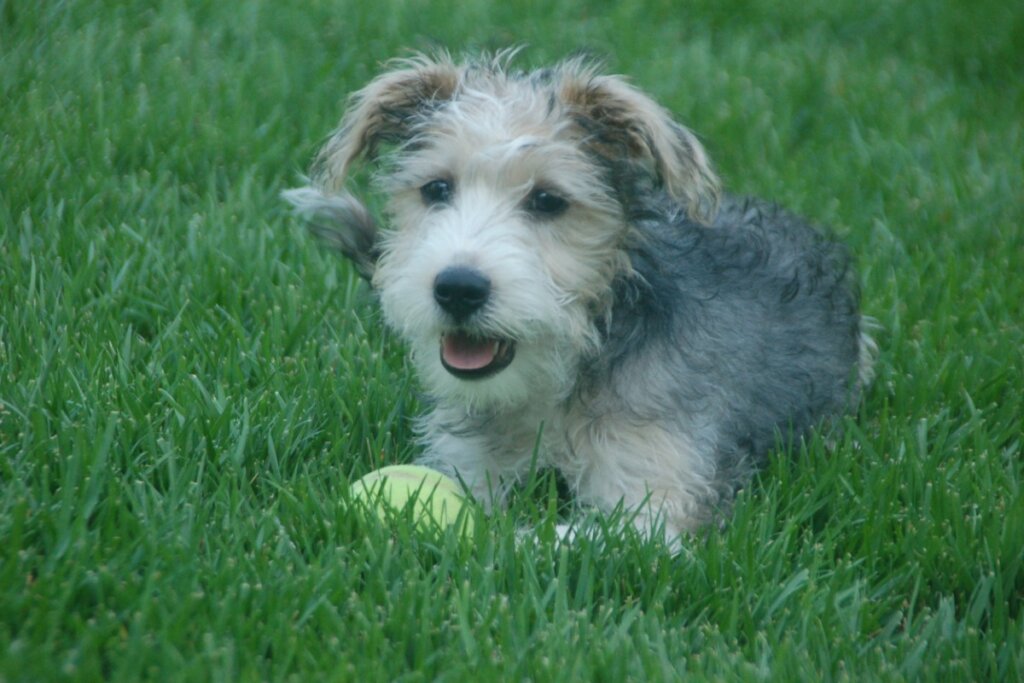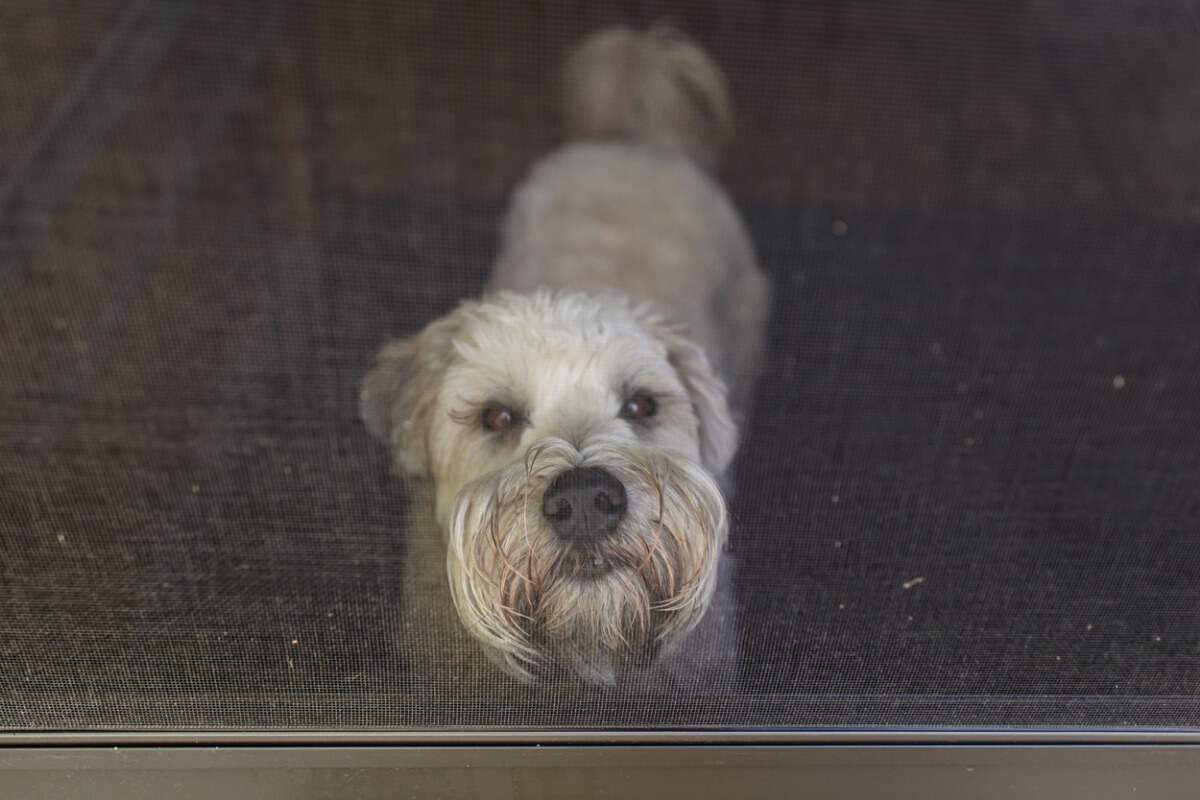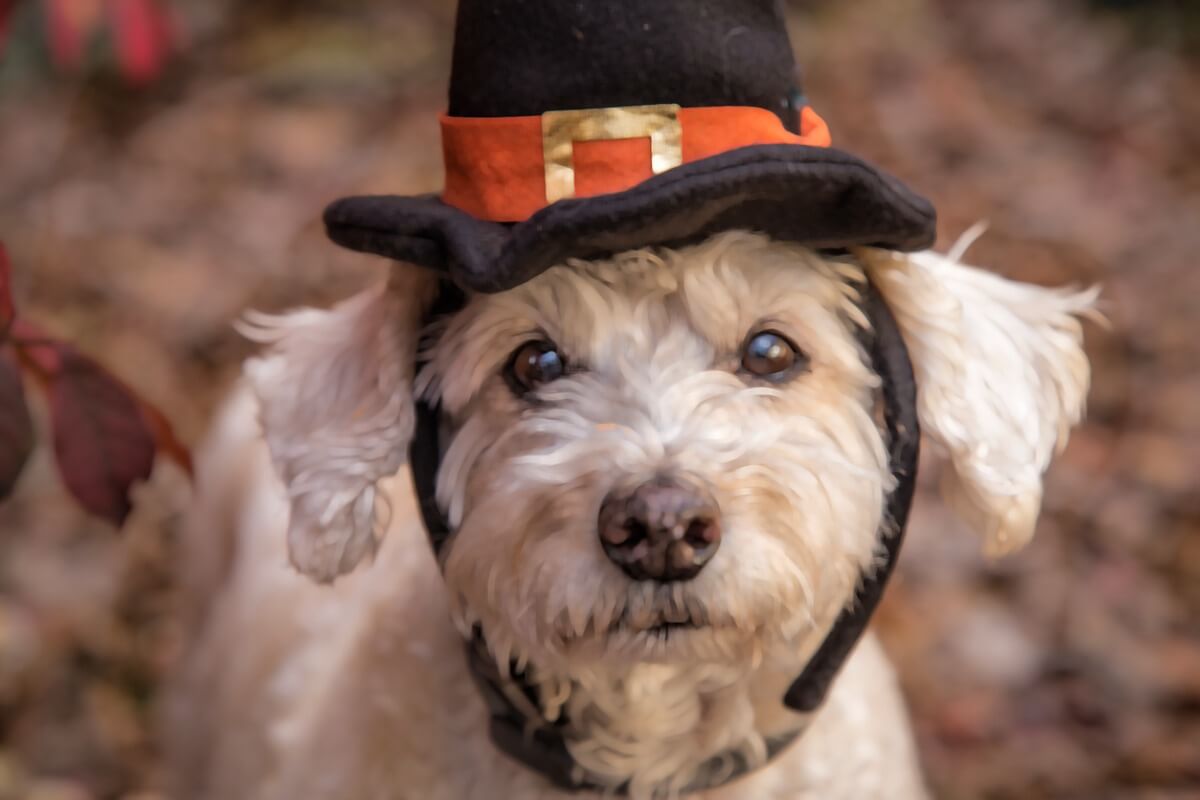Schnoodle: All About this Breed

The Schnoodle is a very popular dog – a cross between a Schnauzer and a Poodle. People love it because of its adorable appearance and its active and affectionate character.
If you’re interested in knowing more about this cross, we’ll tell you all you need to know. In addition, you can also learn about the general health of the Schnoodle and the special attention it needs – keep reading!
Origin of the Schnoodle
We don’t know exactly when people began to cross the Schnauzer and the poodle, although it’s estimated that it was about 40 years ago when the name was given to this crossbreed. Like other hybrids, the Schnoodle isn’t recognized as a breed by international cynological entities.

Characteristics of the breed
The body of the Schnoodle is proportionate and athletic. Its coat is one of its best qualities, as it’s abundant, long, and curly. Its texture can be thicker, like the Schnauzer, or silky like the Poodle. The color of its coat is variable, although it’s most often gray, black, white, brown, or gold.
Depending on the size of their parents, the Schnoodle can be one of 5 different variants. You can see them below:
- Giant: It weighs 30-32 kilograms and measures 66 centimeters to the withers.
- Standard: Weighing 20-30 kilograms and 50-66 centimeters in height, it’s the cross between the average size of both parent breeds.
- Medium: It weighs 12-20 kilograms and is about half a meter tall.
- Miniature: It weighs 6-12 kilograms and is 30-40 centimeters tall.
- Toy: This variant weighs only 3-6 kilograms and is never more than 30 centimeters in height.
Another characteristic trait of this breed is that it sometimes develops the beards and bushy eyebrows of the Schnauzer. Although these features aren’t too noticeable, the Schnoodle does tend to have a denser coat on the face.
The character of the Schnoodle
It’s a very sociable breed. They’re very friendly dogs and give constant signs of affection. In addition, they have a lot of energy and desire to play, so they’re ideal for long walks in parks and other open places. It should be noted that they love to swim.
The Schnoodle is a highly intelligent dog. It’s also curious and daring, which makes these dogs great “students” when it comes to practicing tricks and games.
However, they’re shy dogs with others of their kind. The ideal thing would be to create a good socialization from a young age, as otherwise dysfunctional behavior could appear when it comes to relating to other dogs.
Special care
Being a dog with such intense energy, daily exercise is a priority. If not, you may be faced with behavioral problems typical of pent-up energy, such as destructive behavior, or anxiety disorders.
In keeping with its psychological needs, the Schnoodle needs mental stimulation for times when it needs to play alone. It isn’t a dog that will lie in a corner and sleep all afternoon; it’ll want to be active and interact with you. Spend quality time with them and rotate their toys periodically.
Its coat is another of the Schnoodle’s characteristics to take into account when caring for it. As its coat is thick and curly, it’ll need daily brushing to remove dead hair and avoid tangles and clumps.
Baths shouldn’t be too frequent. In fact, it’s advisable to take the Schnoodle to the dog groomer when it’s time to shower them, because there they’ll give them the most appropriate treatment to take care of their skin and hair health.
Health
This breed is susceptible to inheriting some of the typical ailments of the Schnauzer and the poodle. However, it seems that, in this crossbreed, the incidence of these diseases is lower. Some of the most important are the following:
- Otitis: Due to its large droopy ears (which ventilate poorly), the Schnoodle has a tendency to contract ear diseases, especially due to fungi and bacteria.
- Cataracts: This tendency comes from the Poodle. It’s the progressive opacity of the crystalline lens of the eye, which makes vision difficult.
- Diabetes: This disease, on the other hand, is inherited from the Schnauzer. It can be prevented through a balanced diet and quality feed.
- Dislocation of the patella: Also inherited from the poodle, this injury occurs when the kneecap becomes dislocated.
- Hip dysplasia and other joint problems: This pathology, rather than coming from the parent dogs, is a frequent problem in large breeds. Because of this, it’s more likely to be found in the giant and standard Schnoodle breeds.

As you can see, the problems that this cross breed can suffer from aren’t very serious and it’s possible to prevent them with proper care. Make sure you keep your dog’s vaccination and deworming schedule up to date and have regular check-ups. In this way, you’ll ensure many happy years with your furry friend.
All cited sources were thoroughly reviewed by our team to ensure their quality, reliability, currency, and validity. The bibliography of this article was considered reliable and of academic or scientific accuracy.
- The Modern Kennel Conundrum. (2015, 11 febrero). The New York Times Magazine.
- Veterinarians.org Team. (2021, 27 octubre). The Schnoodle: A Short Guide to an Adorable Dog Breed. Veterinarians.Org. Recuperado 7 de diciembre de 2021, de https://www.veterinarians.org/schnoodle/
- Duarte Rodríguez, L. Z., & Acuña Acosta, O. T. (2004). Estudio comparativo del perfil lipídico y glicemia en caninos obesos de las razas poodle y labrador (Doctoral dissertation, Universidad Cooperativa de Colombia, Facultad de Ciencias de la Salud, Medicina Veterinaría y Zootecnia, Bucaramanga).